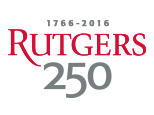We have developed performance assessments to help teachers and our research team track growth in students’ science practices and the integration of practices with content. The performance assessments vary in length from one to five or six lessons. They also vary in whether they are performed individually or both individually and in groups, and in the amount of prior content knowledge required. We share some examples on the pages in this section. All the assessments provide information to teachers that show them “where students are” and can therefore inform revisions to instruction.
Our shorter performance assessments typically assess students’ abilities to transfer science practices they are learning to new topics. We share an example on this page. In this assessment, students use three pieces of evidence to evaluate two competing models for why two boys in a family have gotten asthma.
Assessments such as these can be used as pretests and posttests for purposes of evaluating Student Growth Objectives focused on science practices during the course of a year, or they can be used as summative or formative assessments to guide ongoing instruction.
Our multiple-day performance assessments involve students working both individually and in groups, using evidence to construct, revise, and evaluate models incorporating core science content that has been studied in class.
Our multiple-day assessments assess students’ mastery of NGSS performance expectations as students use evidence in modeling, data analysis, argumentation, and communication practices. We have included two examples here.
The shore birds assessment engages students in evaluating a body of evidence to develop a model for why the population of the red knot, a shorebird that migrates from South America to northern Canada every spring, is decreasing over time. Students must use knowledge of ecology as well as their competencies in practices of modeling, evidence analysis and evaluation, coordinating models with evidence, argumentation, and communication.
The finches assessment, based on a scenario developed the BGUiLE project (Reiser, Smith, Tabak, Steinmuller, Sandoval, & Leone, 2001) has students use their knowledge of natural selection and microevolution to develop and evaluate models explaining patterns of a sharp population decrease among Galapagos finches in the 1970s. In a context in which they must draw on their understanding of natural selection to develop a new model in a new domain, students engage in practices of modeling, evidence analysis and evaluation, coordinating models with evidence, argumentation, and communication.
Teachers have used these assessments either in addition to other unit tests, or as their unit tests.


